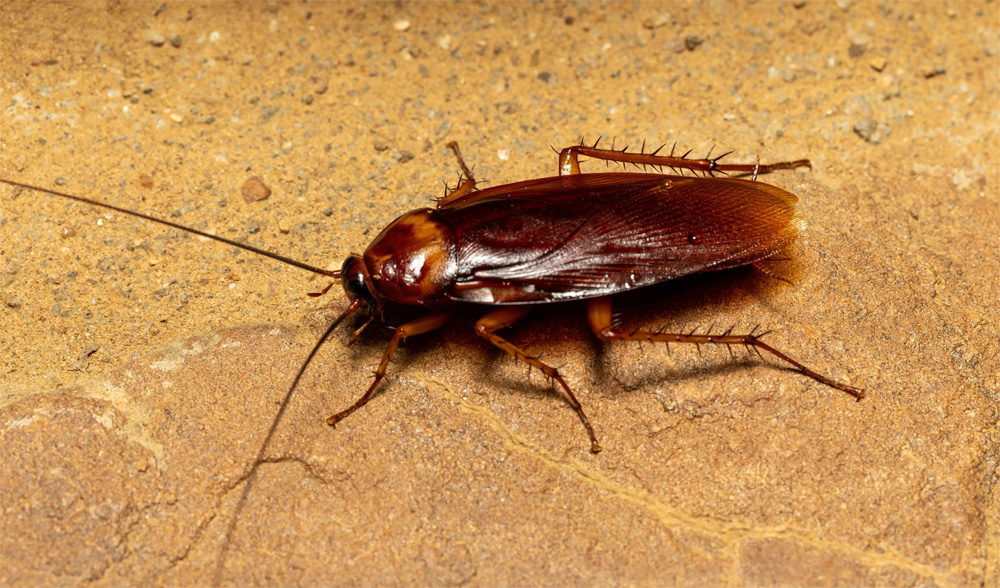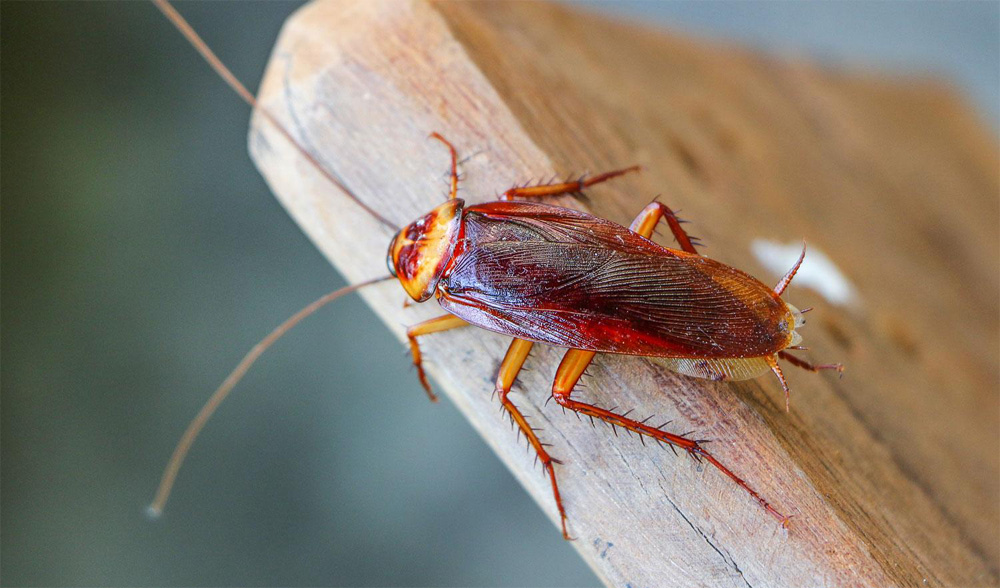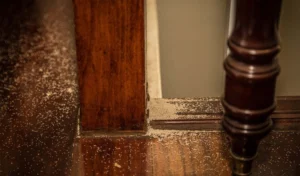The arrival of fall weather brings pumpkin-flavored coffees and treats. But does it also cause a cockroach infestation?
As temperatures begin to drop, numerous animals opt for hibernation or migration to sunnier destinations. However, cockroaches follow a different path. With a lifespan ranging from six months to a year and a half, they don’t have the luxury of extended slumbers or long-distance journeys.
What occurs to cockroaches as the mercury dips? Can chilly temperatures prove fatal for these resilient insects? Continue reading to discover how seasonal temperature fluctuations influence the behaviors of two of the United States’ most frequently encountered cockroach species.

American Cockroach
The American cockroach, widespread across the United States, can often be one of the largest species you’ll encounter within your home. These roaches typically favor outdoor habitats such as woodpiles, decaying logs, and trees as their ideal living environments.
American cockroaches exhibit a surprising tolerance for cold weather. In fact, some can endure temperatures below freezing for a certain duration. However, their preference leans towards staying warm during the fall and winter seasons, often leading them to make unwelcome appearances within your home. They particularly relish indoor environments maintained at approximately 70 degrees, a temperature commonly set on thermostats during the colder months.
Having cockroaches infesting your home is already troublesome, but the knowledge that female cockroaches can lay egg sacs containing up to 16 eggs every six days is bound to elicit a cringe. That’s why there will so easily be a cockroach infestation. Additionally, American cockroaches have been observed to establish multi-generational colonies, which implies that you could potentially have multiple generations of these insects coexisting in your residence simultaneously.
Furthermore, although not all cockroaches harbor pathogens, some do. This implies that anything these pathogen-carrying roaches come into contact with is at risk of becoming contaminated with bacteria. They have a knack for traversing various areas, ranging from sink drains to kitchen counters.

German Cockroach
Contrary to their name, German cockroaches aren’t actually native to Germany; some researchers even speculate their origins in Asia. Regardless of their place of origin, having these cockroaches in your home is far from desirable. However, when temperatures decline, your house is precisely where they would prefer to take refuge.
German cockroaches thrive in environments with temperatures around 90 degrees Fahrenheit. Even during the coldest winter days, the interior of your home is unlikely to reach such high temperatures. However, this doesn’t deter the German cockroach, as it favors indoor living regardless of outdoor conditions. In fact, no matter there is a severe cockroach infestation, it’s entirely possible to encounter these cockroaches within your house at any time of the year.
Similar to their American counterparts, German cockroaches are prolific breeders, with egg sacs capable of holding up to 40 eggs. Furthermore, young roaches can mature into adults in as little as 42 days. This means that within just over a month, all the surviving cockroaches from a brood can potentially reproduce and give rise to new broods. It’s essential to note that this scenario assumes the presence of only one of these cockroaches in your house. Given the German cockroach’s affinity for hiding in cracks and crevices, it’s highly likely that there are more of them in your residence than you may realize.
How to Kill Cockroaches
While temperature plays a role in the presence of cockroaches in your home during the fall or winter, another significant factor is their preference for readily available food and water sources.
When contemplating ways to eradicate cockroaches, your initial focus should be on making your home less enticing to these pests. If there is a cockroach infestation, chances are you neglected to check something. Here are several measures you can implement to prevent cockroaches from invading your residence:
- Eliminate potential cockroach food sources by promptly cleaning up spills and crumbs, and always ensure that food and beverages are stored covered in your home.
- Regularly sweep or vacuum your surroundings since some cockroaches consume their own excrement. (Unpleasant, isn’t it?)
- Dispose of vacuum bags away from the house as a precaution in case they contain cockroach egg sacs.
- Remove potential water sources by cleaning and drying tubs, shower walls, and sinks, and addressing any leaky fixtures. Consider using toothbrush covers as an additional measure.
- Close and seal any cracks or potential entry points for cockroaches.
- Maintain a tidy yard and store leaf and wood piles at a distance from your home.
While these measures are effective for preventing a potential cockroach infestation, their effectiveness has limitations, particularly when dealing with German cockroaches, which have shown resistance to specific types of insecticides.
If you’re already dealing with a cockroach infestation in your home, your most reliable option is to seek out a provider offering safe and effective insecticides, coupled with extensive expertise in their application. That’s precisely what Safe-Killer can provide you. Our skilled technicians can collaborate with you to tailor a pest control strategy that suits your specific requirements.



